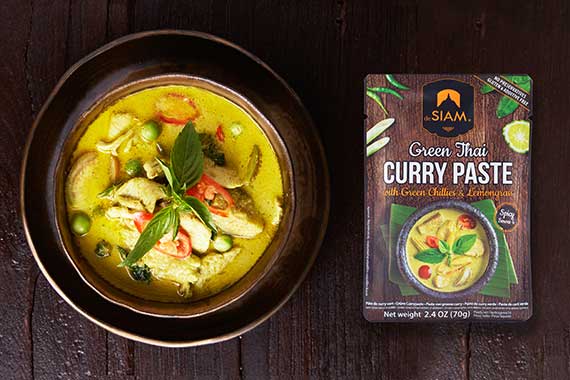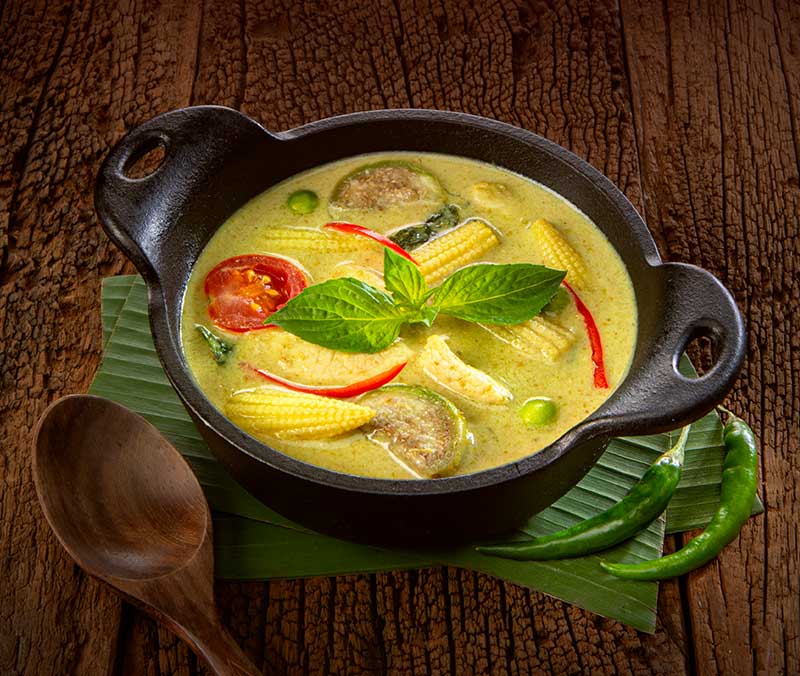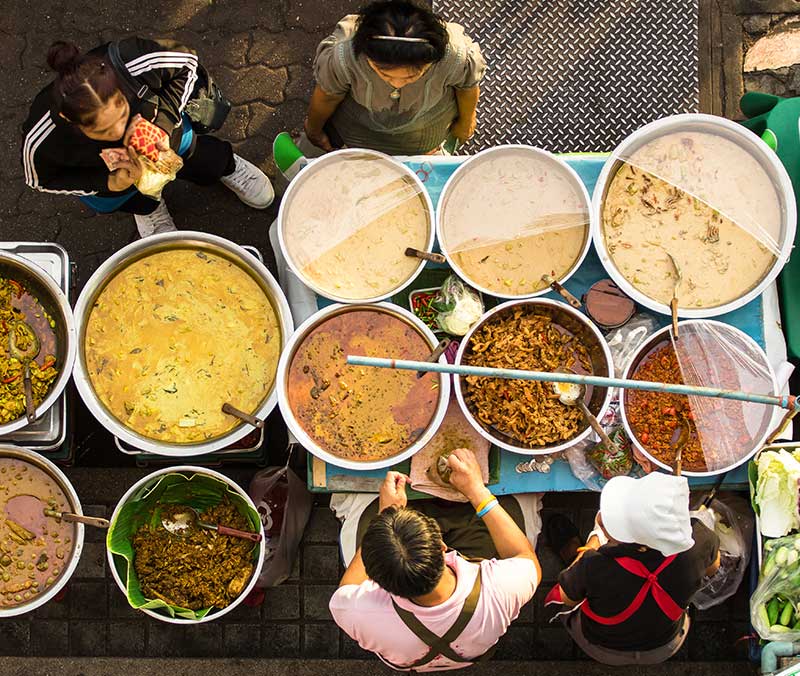My shopping cart
Your cart is currently empty.
Continue Shopping
The Green Curry, a traditional Thai dish that feeds your curiosity by its color, fools you by its name and surprises by its taste. Today we’ll go over a Thai dish that is famous all over the world, exploring its name, history and more.

Thai green curry, also known as “Keng Kewan” (sweet green curry for the literal Thai translation to English), is a variant of the standard red curry that even though it has a lot in common with its red counterpart, it has key differences that makes it very special, not only regarding its appearance, but also its taste.
Don’t get fooled by its name however: this dish is not a dessert; in fact, the taste is just slightly sweeter than its red brother and, in some cases, just as spicy. The “sweet” in the name refers to the green color and not to its taste, because its ingredients turn its color into a creamy mild green, which in Thai is called “sweet green curry”.

Being such a traditional Thai dish does bring the impression that such spice has been part of Thailand’s culture for centuries, perhaps even older than the red curry, but that is not true: some curries like Massaman are thought to be older than 300 years, while this Thai specialty was first mentioned in a book by an author known as L Phaehtraarat in 1926.
One fun fact is that, due to the decade in which it was created, it is suggested that the creation of the green curry wasn’t a mere casualty. Considering that the late 1920s and early 1930s were busy political and social times in Thailand, times when the government changed from being an absolute monarchy to a democracy, it’s believed that the curry was born from experimentations by the Thai people, that were inspired by renewal and growth.

It’s true that just like anything in cooking, there isn’t only one way of preparing a sweet green curry, but let’s point out the important, the common and the replaceable in this journey.
First, we have galangal, which is the main ingredient of the Thai green curry. Galangal goes by different names in different countries. In some Chinese-speaking countries in Asia for instance, it’s known as “blue ginger”, but its flavor is very different from the regular “yellow ginger”. Another ingredient that sets this dish apart is multiple green chilies; they also should not be substituted, as they are premature red Thai chilies, which are completely different from green bell pepper for example. Kaffir lime leaves are also commonly used and of course we couldn’t forget one of the most key ingredients in most Thai curries, which is the coconut milk.

There are also components of the standard Thai green curry that are common and may be replaced if finding them is too much of a challenge. Lemongrass is a commonly used ingredient, but the only useful part is the bulb. As for the green section and the outer layer, they should be removed, much like removing the outer layer of an onion.
Despite the general agreement that the standard curry was first made in India, it’s undeniable that this dish is in the heart of Thai culture and will remain there. The internationalization of many cultures and the possibility of shipping ingredients from all over the world turns the desire of tasting different foods into reality. Experimenting and replicating dishes from different places is not only easier than ever before, but also a privilege that most of our ancestors didn’t have.
Impress friends and family by cooking this spicy and creamy Thai green chicken curry. It's easy and quick to make. Make this with chicken or even entirely meat free. With a sauce this good, you can put anything in it – and it will taste amazing!
Get recipe